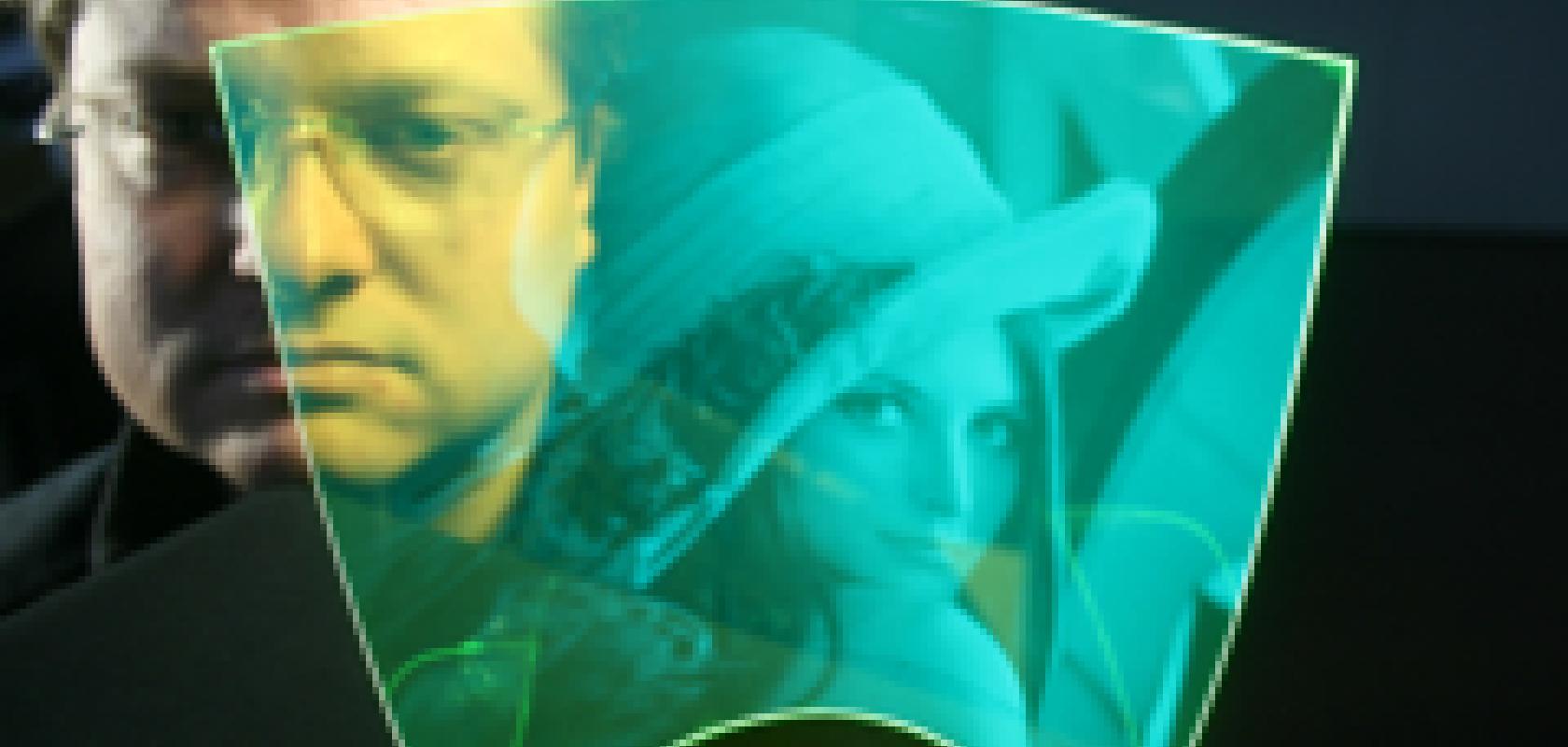An Austrian research team has developed an new way of capturing images based on a flat, flexible, transparent, and potentially disposable polymer sheet.
The team has described its new device, as well as its possible applications, in a paper published in the Optical Society’s (OSA) open-access journal Optics Express.
The imager, which resembles a flexible plastic film, uses fluorescent particles to capture incoming light and channel a portion of it to an array of sensors framing the sheet. With no electronics or internal components, the imager’s elegant design makes it suitable for a new breed of imaging technologies, including user interface devices that can respond not to a touch, but merely to a simple gesture.
'To our knowledge, we are the first to present an image sensor that is fully transparent – no integrated microstructures, such as circuits – and is flexible and scalable at the same time,' explained Oliver Bimber of the Johannes Kepler University Linz in Austria, and co-author of the Optics Express paper.
The sensor is based on a polymer film known as a luminescent concentrator, which is suffused with tiny fluorescent particles that absorb a very specific wavelength (such as blue light) and then re-emit it at a longer wavelength (green light, for example).
Some of the reemitted fluorescent light is scattered out of the imager, but a portion of it travels throughout the interior of the film to the outer edges, where arrays of optical sensors (similar to 1-D pinhole cameras) capture the light. A computer then combines the signals to create a gray-scale image.
'With fluorescence, a portion of the light that is reemitted actually stays inside the film,' added Bimber. 'This is the basic principle of our sensor.'


